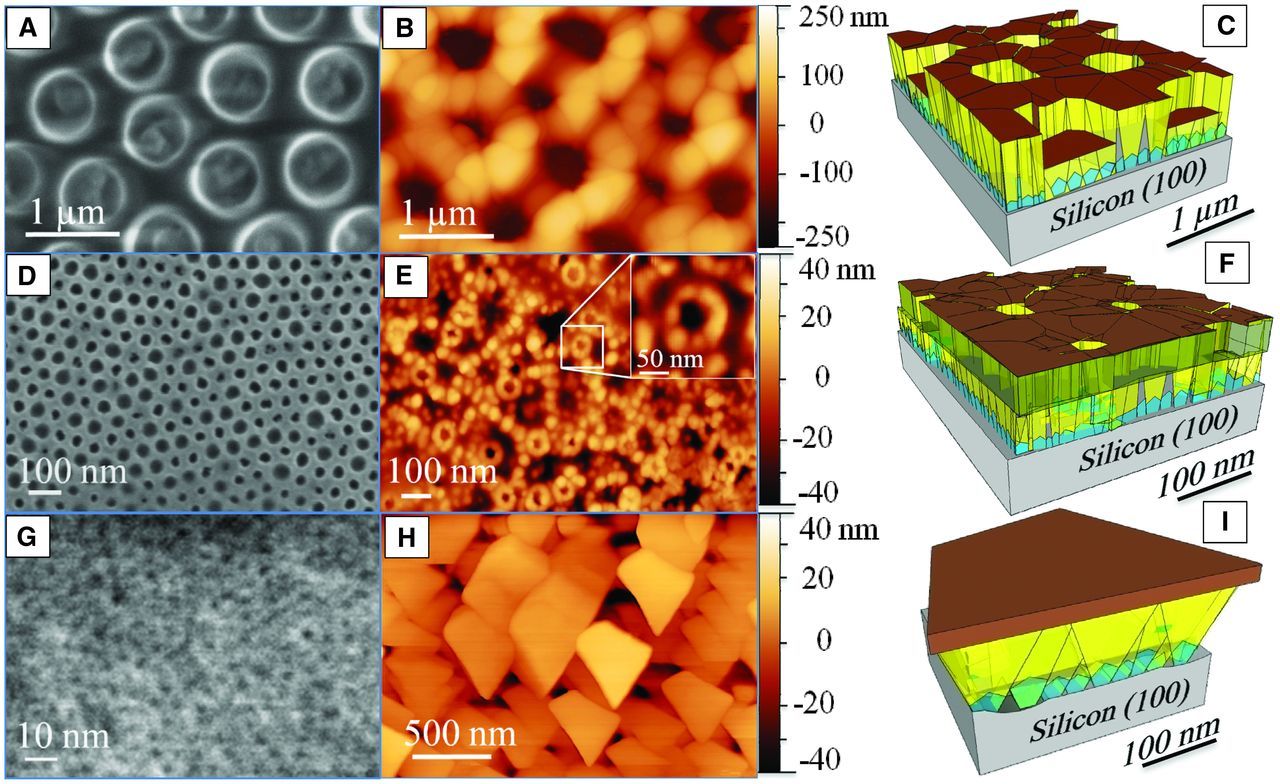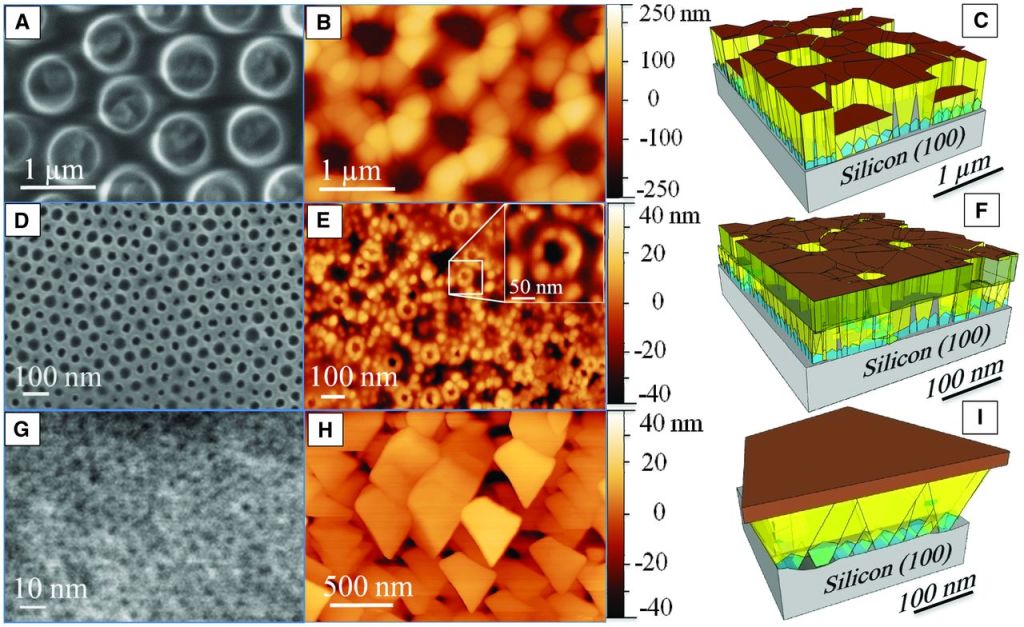
Soft-Chemistry–Based Routes to Epitaxial α-Quartz Thin Films with Tunable Textures

A. Carretero-Genevrier, M. Gich, L. Picas, J. Gazquez, G. L. Drisko, C. Boissiere, D. Grosso, J. Rodriguez-Carvajal, C. Sanchez,*
Science 17 May 2013: Vol. 340 no. 6134 pp. 827-831 DOI: 10.1126/science.1232968Piezoelectric nanostructured quartz films of high resonance frequencies are needed for microelectronic devices; however, synthesis methods have been frustrated by the inhomogeneous crystal growth, crystal twinning, and loss of nanofeatures upon crystallization. We report the epitaxial growth of nanostructured polycrystalline quartz films on silicon [Si(100)] substrates via the solution deposition and gelation of amorphous silica thin films, followed by thermal treatment. Key to the process is the combined use of either a strontium (Sr2+) or barium (Ba2+) catalyst with an amphiphilic molecular template. The silica nanostructure constructed by cooperative self-assembly permits homogeneous distribution of the cations, which are responsible for the crystallization of quartz. The low mismatch between the silicon and α-quartz cell parameters selects this particular polymorph, inducing epitaxial growth.

